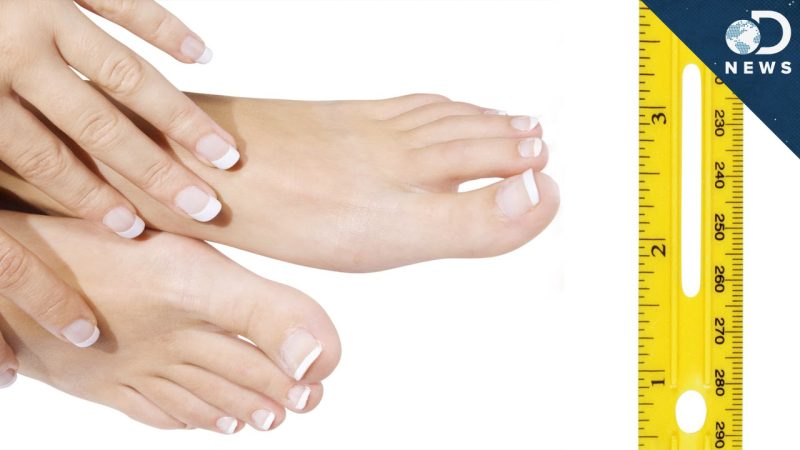If you’ve ever noticed that your fingernails seem to need trimming every week while your toenails grow at a much slower pace, you’re not alone. This difference is something most people observe but rarely understand. Nail growth is influenced by a variety of factors, including biology, blood circulation, and even lifestyle habits.
In this article, we’ll explore the science behind why toenails grow slower than fingernails, the average growth rates of nails, and the biological, environmental, and health-related factors that contribute to this difference.
How Nails Actually Grow
To understand why toenails grow more slowly, it helps to know how nails grow in the first place. Both fingernails and toenails originate from the nail matrix, a tissue beneath the skin at the base of the nail. The matrix constantly produces new cells, which harden and push the nail forward.
On average:
- Fingernails grow about 3 millimeters per month.
- Toenails grow about 1 millimeter per month.
That means toenails typically take 12–18 months to fully regrow, compared to just 6 months for fingernails.
The Role of Blood Circulation
One of the primary reasons toenails grow more slowly than fingernails is blood circulation. Fingertips have a richer blood supply because they are used more often and are closer to the heart. This enhanced circulation means the nail matrix receives more nutrients and oxygen, speeding up nail cell production.
Toenails, on the other hand, are farther from the heart and generally receive less blood flow, slowing down their growth process.
Impact of Physical Activity and Use
Our hands are in constant motion—typing, writing, cooking, and performing countless daily tasks. This frequent activity increases circulation to the fingers, which in turn stimulates nail growth.
Feet, however, are usually enclosed in shoes for much of the day and experience less direct stimulation. While walking does encourage some blood flow, it is nowhere near the same level of activity that fingers experience. As a result, toenail growth is naturally slower.
Size and Protection of Toenails
Another factor is the size and thickness of toenails. Toenails are generally larger and thicker than fingernails, which means they take more time to grow outward. Additionally, toenails are better protected since they’re often covered by shoes and socks. Less exposure to environmental stimulation contributes to their slower growth rate.
Age and Nail Growth Differences
Age is a major factor in nail growth speed. In children and young adults, nails grow faster due to a higher metabolic rate and more active circulation. As people age, both fingernails and toenails slow down in growth—but toenails remain slower because of their distance from circulation centers.
This is why older adults often notice thicker, slower-growing toenails that may also be more prone to fungal infections or discoloration.
Nutrition and Health Factors
Nail growth depends heavily on overall health and nutrition. Fingernails often reflect dietary changes more quickly because of their faster turnover. Key nutrients that support nail growth include:
- Protein (keratin production)
- Biotin (Vitamin B7)
- Iron
- Zinc
- Vitamin C
If someone is deficient in these nutrients, both fingernails and toenails may grow more slowly, but the effect is especially noticeable in toenails since they already grow at a reduced rate.
Hormonal and Seasonal Influences
Hormones and even seasons affect how fast nails grow. Studies show that nails tend to grow faster during summer months because of increased blood circulation from warmer temperatures and more physical activity. Fingernails show this effect more prominently, while toenails grow only slightly faster in summer.
Hormonal changes, such as pregnancy or thyroid imbalances, can also alter nail growth speed. Again, fingers react more noticeably due to their higher baseline growth rate.
Injuries and Regrowth Differences
If you’ve ever lost a fingernail or toenail, you’ve probably noticed how much faster fingernails come back. This is because toenails not only grow slower but also have a larger surface area to replace. A fingernail may take 4–6 months to fully regrow, while a toenail can take up to 18 months.
This difference is critical in medical settings—athletes, for example, who lose toenails due to repeated trauma, often experience long recovery periods compared to minor fingernail injuries.
Common Myths About Nail Growth
There are a few myths surrounding why toenails grow slower than fingernails:
- Myth 1: Cutting nails makes them grow faster.
In reality, trimming has no effect on the speed of growth—it only affects appearance. - Myth 2: Toenails grow slower because of shoes.
Shoes may affect shape and thickness, but they don’t fundamentally slow nail matrix cell production. - Myth 3: Toenails are made of a different material.
Both fingernails and toenails are made of keratin; the difference lies in blood flow and activity levels.
How to Support Healthy Nail Growth
Although toenails will always grow slower than fingernails, there are ways to support healthier, stronger nails:
- Maintain a balanced diet rich in protein, biotin, and minerals.
- Stay hydrated, as dehydration slows nail growth.
- Exercise regularly to promote blood circulation to both fingers and toes.
- Practice good foot care, including trimming nails straight across and keeping feet clean.
- Avoid trauma by wearing well-fitted shoes that prevent repeated impact on toenails.
These practices won’t make toenails grow as fast as fingernails, but they help ensure healthy, strong nails.
Conclusion
The reason toenails grow more slowly than fingernails boils down to biology and circulation. Fingernails grow faster because they are closer to the heart, receive more blood flow, and are stimulated through constant daily use. Toenails, by contrast, grow slower due to reduced circulation, less activity, and their naturally thicker structure.
Understanding these differences not only answers a common curiosity but also highlights how nail growth reflects our overall health and lifestyle. While you can’t change the fundamental biology, you can support healthy growth with proper care, nutrition, and circulation-boosting habits.
FAQs
1. How much faster do fingernails grow compared to toenails?
Fingernails grow about three times faster than toenails—around 3 mm per month versus 1 mm per month.
2. Does trimming nails frequently make them grow faster?
No, trimming nails doesn’t change their growth rate; it only maintains length and shape.
3. Why do toenails get thicker as we age?
Reduced circulation, slower growth, and repeated trauma (like shoe pressure) contribute to thicker toenails in older adults.
4. Can diet affect how fast nails grow?
Yes, nutrients like protein, biotin, iron, and zinc are crucial for nail growth. Deficiencies can slow nail development.
5. How long does it take for a lost toenail to regrow fully?
A toenail can take 12–18 months to fully regrow, while fingernails usually regrow in 4–6 months.
Also read: EO Smart: Next-Gen EV Charging Solutions for Homes & Businesses









